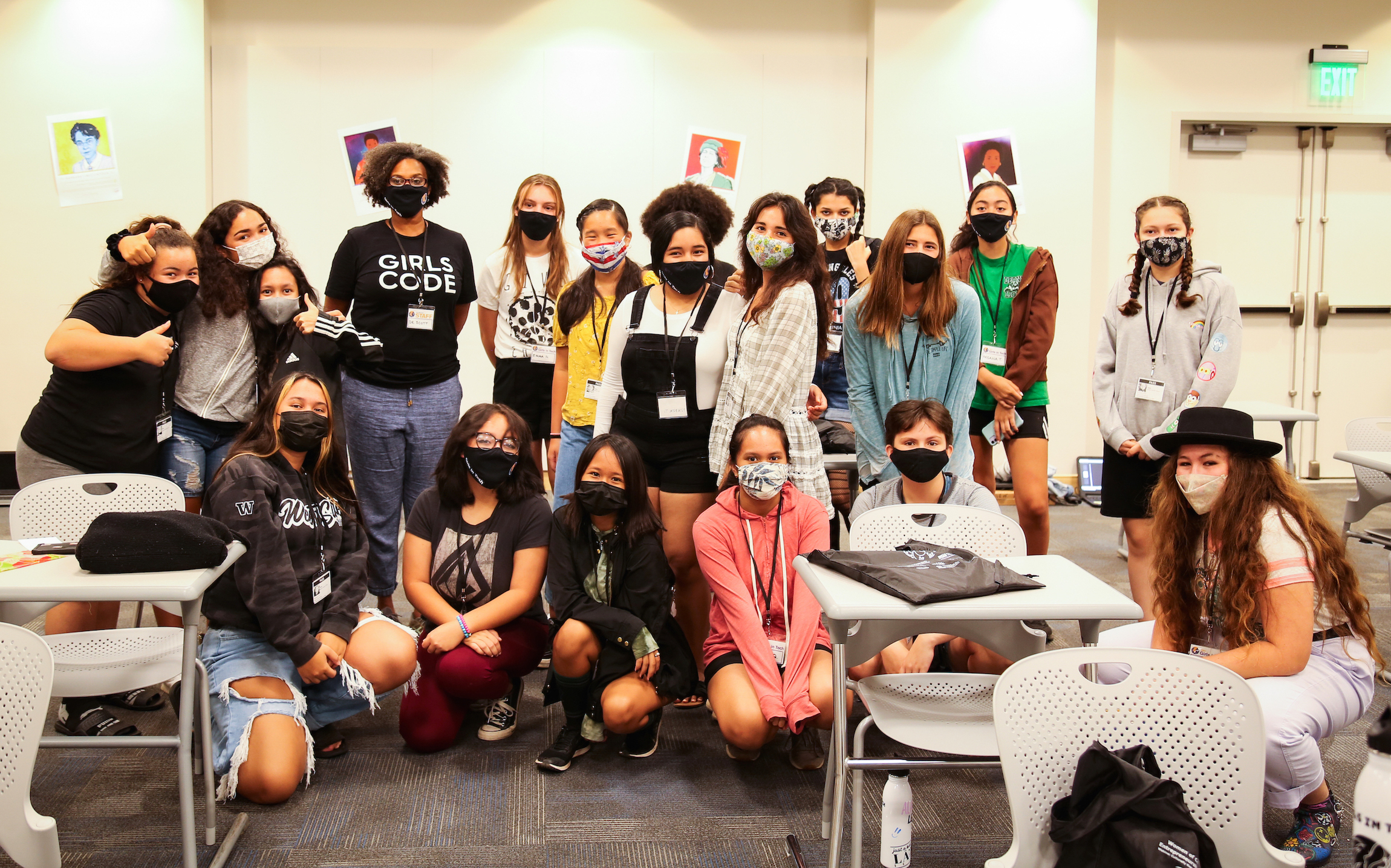Girls in Tech summer program bridges neighbor island students in Hawaii

A participant experiments with photosynthesis and algae on Botany Day at the Girls in Tech summer program.
This week, 33 middle and high school students from Oahu and the neighboring islands arrived at Hawai’i Pacific University’s (HPU) campus on Oahu to participate in the Girls in Tech Summer Program. This program is hosted by HPU in partnership with Arizona State University's Center for Gender Equity in Science and Technology.
“Collaborating with HPU and implementing a STEM program for more than 30 girls from almost all of the Hawaiian islands is such an honor and was a two-year endeavor that was pushed back due to the pandemic,” said Kimberly Scott, executive director and founder of the ASU center. “These hands-on experiences that are also place-based provide opportunities for the girls to become technosocial change agents and pursue STEM careers later on.”
The camp was designed to explore how girls and women use science, technology, engineering and math to make a positive difference in their careers, communities and their lives. Throughout the program girls in grades 8–12 are exploring various STEM disciplines from app development, robotics computer science and virtual reality to marine science, botany and space. Virtual reality was a huge hit with the girls.
One student said: “My favorite among the stations was the VR. I have done this before, but what made it so cool was that I could see the Earth from the spacecraft. Also, I got to feel what it's like to be floating around in space.”
The girls also went to the botanical gardens to learn about various aspects of botany and spent part of that day in a lab looking at algae under a microscope. One girl said this was a highlight of the day for her because “you can see them better” and “it was cool to see so many native plants, and the view was beautiful.”
Participants in the Girls in Tech summer program pose for a group photo.
Led by faculty and graduate students from HPU and the ASU center, with guest experts and mentors from a variety of STEM disciplines, the program itinerary includes the following immersive, hands-on learning experiences:
- Computer Science Day at HPU’s Aloha Tower Marketplace facility.
- Astronomy Day at the Bishop Museum.
- Botany Day at the Hawaii Loa campus.
- Marine Science Day at HPU’s Makapu`u Campus/Oceanic Institute facility.
- Final Day-Participant Presentations, demonstrating program-learning outcomes at Aloha Tower Marketplace.
“Hawaiʻi Pacific University is committed to serving and educating the people of Hawaii and inspiring students to pursue the subjects and causes they are passionate about,” said Brenda Jensen, dean of HPU’s College of Natural and Computational Sciences. “HPU is pleased to partner with Arizona State University and the National Science Foundation to offer this unique learning opportunity, introducing female youth to the multitude of STEM fields and ultimately to provide them the confidence to envision their unlimited potential.”
The cost of the program, including the students’ airfare to Oahu, is being fully funded by a National Science Foundation educational grant. HPU is providing student housing at its Waterfront Lofts residences at the Aloha Tower Marketplace.
Strict pandemic health and safety protocols are being instituted with all participants wearing masks, conducting daily temperature checks and social distancing.
For more information on this summer program and other STEM programs for high school girls, visit cgest.asu.edu/girlsintech.
More Science and technology

Compact X-ray laser lab aims to reveal deep secrets of life, matter and energy
X-rays allow us to view inside the human body to diagnose broken bones and other hidden problems. More recent X-ray advances are…

Apollo lunar samples enable ASU researcher to pinpoint moon’s crystallization timeline
A team of researchers, including Arizona State University geochemist Melanie Barboni, in collaboration with scientists from The…

NASA launches space telescope to chart the sky and millions of galaxies
California’s Vandenberg Space Force Base was the site for Tuesday’s 8:10 p.m. launch of the NASA SPHEREx mission aboard a SpaceX…


